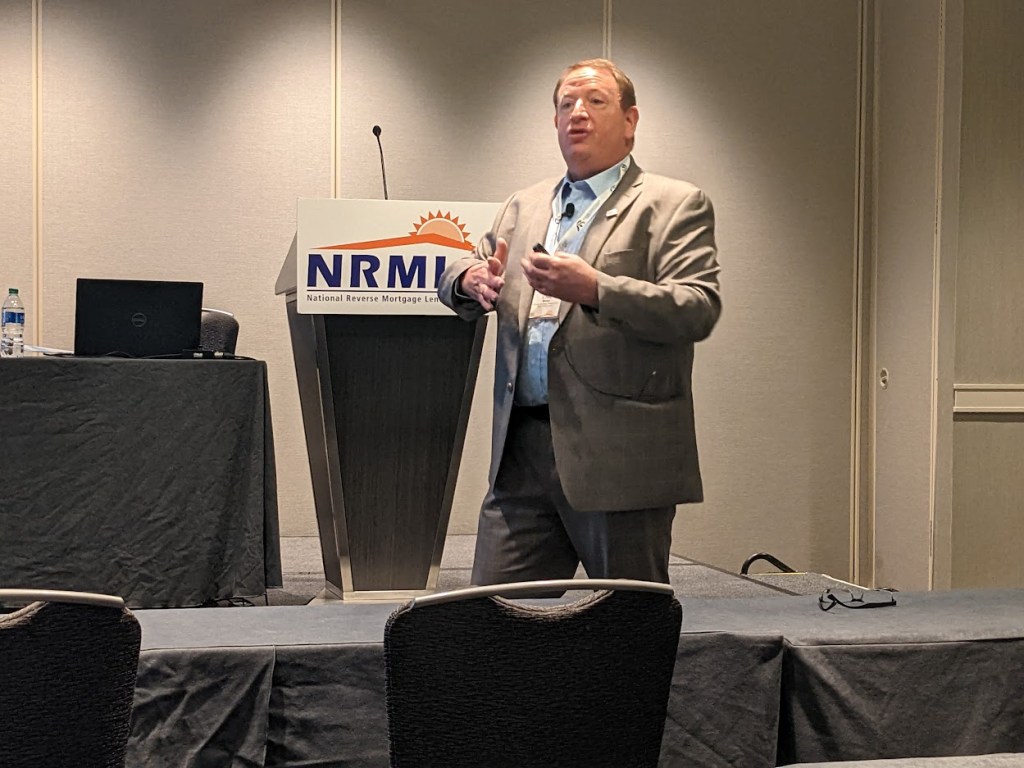The only constant in the world is change, a rule that is also true of the reverse mortgage industry — as evidenced by how many regulatory changes are handed down to the Home Equity Conversion Mortgage (HECM) program by the U.S. Department of Housing and Urban Development (HUD) and the Federal Housing Administration (FHA).
However, the pace of change may have sped up in recent years due to historic inflation and the COVID-19 pandemic, according to Craig Barnes, VP of reverse mortgage education at Fairway Independent Mortgage Corporation. Barnes offered his thoughts in a recent episode of The RMD Podcast.
The speed has increased
Barnes — who entered the reverse mortgage industry nearly 20 years ago — said that while change is a constant in the business, the recent changes feel like they’re happening more quickly than they once did.
“I feel like this [period of change] happened much faster,” he said. “In 2008, when we had the mortgage meltdown and we saw the big banks getting out, and we had the federal government going from bank to bank to see if they could survive, it seemed like a little bit of a longer ramp up to those changes.”

This time, largely due to the ceasing of originations and bankruptcy of Reverse Mortgage Funding (RMF) late in 2022, the changes to the industry have occurred very quickly ‚ especially when compared to the industry landscape just a few months prior.
“Over the summer, it seemed like we were chugging along, realizing the rates were starting to creep up,” Barnes said. “But it didn’t [feel like anything] major. But all of a sudden, it seemed like rates started to spike, and principal limits started to decline. And it just was very, very fast to me.”
Still, despite the rapid pace, there are signs that the origination business is starting to improve, he said.
“Rates are looking a little bit better,” Barnes said. “I’m hearing that on the secondary market, there’s a little bit more liquidity there. So, I think we’re already seeing a changing of the tide. But, it just seemed to me [that this most recent change] happened much faster than any of our declines or changes in the market that we’ve that I’ve been involved in since 2004.”
Relying on refinances
When asked if the change of pace might be attributable to the boom of HECM-to-HECM (H2H) refinances, Barnes said the likelihood is high.
“Depending on what lender you’re talking to, a lot of lenders out there had maybe 40% — some a little bit more, some a little bit less, with a few exceptions out there that I know of — of refi volume,” he said. “It may have represented between 25-50% of a lot of lenders’ businesses. And when those rates continue to go up and up, the refi opportunity is gone. So, you couple that with those higher rates, and you may not be able to get as much money from a loan. Not even a refi, just a regular HECM. Along with everything else going on in the industry, I really think it was kind of a perfect storm.”
For Barnes — whose business it is to keep reverse mortgage professionals and consumers up to speed about the product — it comes back to educational efforts.
“I think we can always do more,” he said. “We’re up to more than $11 trillion of home equity in the senior market that’s out there. So certainly, we can always do more if we have that number out there, but I think we’re making inroads. I’m a member of the education committee at NRMLA, and we have done a lot with even educating through NMLS classes [to the point] where now we’re not only getting reverse loan officers, we’re getting forward loan officers.”
That helps get the word out about the reverse mortgage option. However, lenders can’t become complacent and must stay on top of their educational needs, which aligns with larger industry priorities, he said.
“Ultimately, we still see the stigma out there, and the idea that ‘the bank gets your home,’” he said. “Or, ‘reverse mortgages are too expensive,’ which comes from [potential borrowers just not understanding] what some of the advantages are. So I think education is key, but not only educating our staffs, but I think the public as well. I think we could really make more inroads in education.”
Listen to the recent episode of The RMD Podcast for the full discussion.






